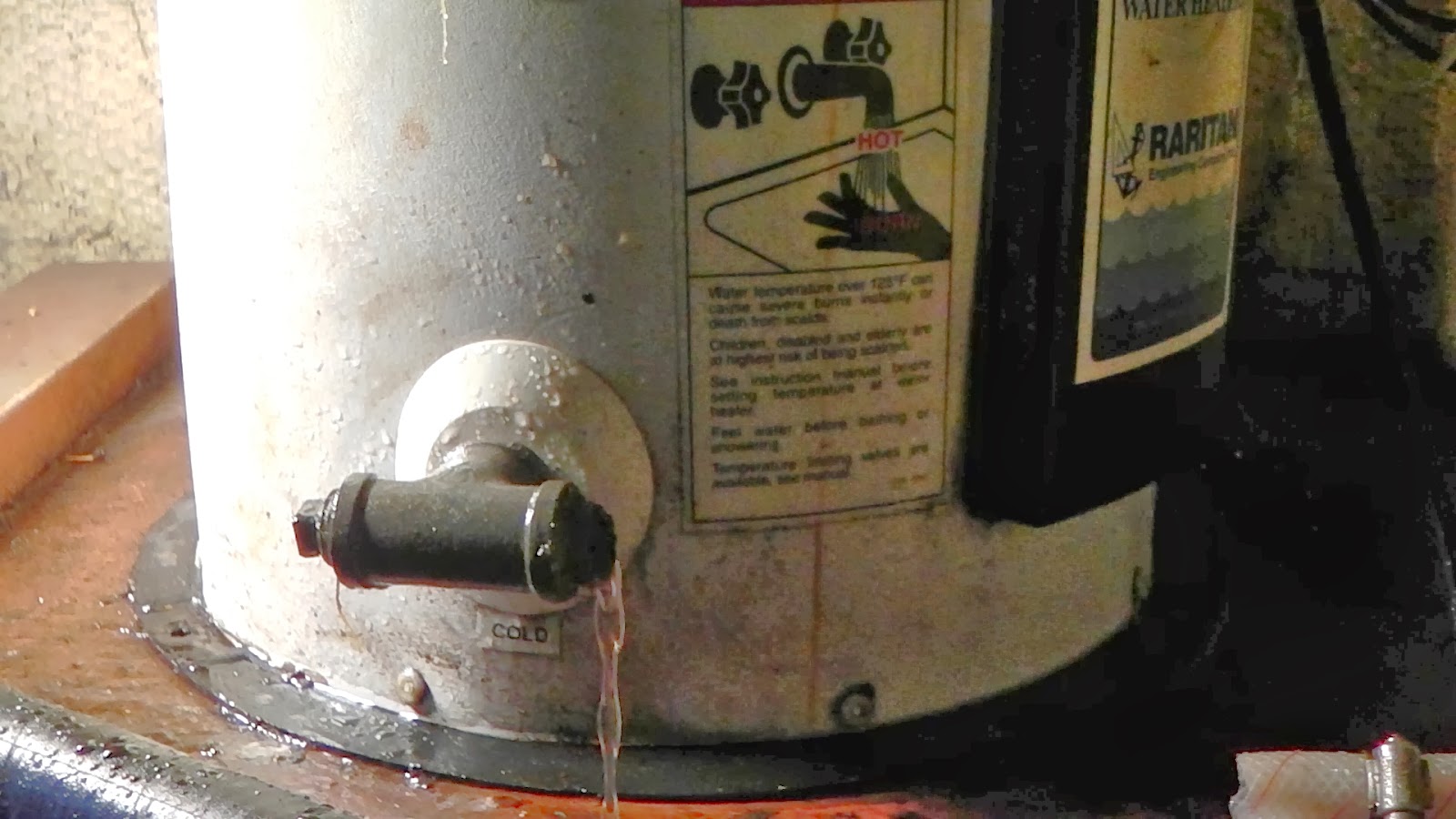We started off this weekend by mounting the newly refinished teak strips on the anchor pulpit. Before doing that, we scraped off the last of the crud and stains that had accumulated on the pulpit and then waxed it.
Time to get to some more serious stuff. We need to replace our 6 gallon electric water heater. It seems that sometime over the years before we owned this boat, someone put some diesel fuel or gasoline in the water tank. Frances spent a lot of time over the last few summers flushing the system and while the cold water is now fine, the hot water side still has that slight diesel smell. Since we've flushed out everything else, the only part left is the water heater.
We crawled down beside the port engine to get some measurements. The old Raritan water heater is circular, 15 inches across and 15-3/4 inches high. It's screwed down to a plywood base that appears to be in pretty good condition. As you can see from the pics, the plumbing is a mess, as you might expect from a 33 year old boat.
Our plan is to remove all of the old 1/2-inch water hose and replace it with PVC. We'll have to make some connections, such as the accumulator tank, fresh water pump and faucets in the galley and head with 1/2-inch water hose. If there are no transition fittings from 1/2-inch PVC to 1/2-inch marine water hose, we'll use all hose. Since most of this plumbing is under the salon floor, we think we can pull new hose (or PVC) in using the old hoses as pilot lines. That worked when we installed a new waste pump-out line.
Removing the hot water tank
Sunday was dark and rainy but that old hot water tank definitely wasn't going to jump out of the boat by itself, so down we went to remove it.
The hose clamps on the cold water supply and the hot water hoses disintegrated when we tried to loosen them. That's fine; all of this stuff is going to be replaced. We cut the hoses with a utility knife and drained the tank into the bilge.
To get the last of the antifreeze solution out, we had to tip the tank almost on its side and to get clearance to do that, we had to remove the coolant recovery bottle on the back of the port engine and the bilge blower. As the last of the liquid drained, we saw that Frances "oil in the water heater" theory was correct. Thick gobs of smelly black goo slithered into the bilge. The whole engine space smelled like diesel fuel.
Once the tank was empty, we turned it around, took off the access plate and cut the AC power wires. Then we wrestled it out behind the port engine. Apparently, we dislodged more diesel scum as we moved the tank.
We keep some clean shop rags on the boat and we used those to sop up the mess. Once it has dried a little, we'll attack that area with our Shop Vac. We'll also replace all those dirty old passive vent hoses. And maybe a new bilge blower, too. Hell, it's only money.
It looked a little better after we cleaned up most of the water and oil.
The AC wiring for the water heater was quite a mess. Whoever maintained this boat for the previous owner loved butt splices. There are probably half a dozen in that rat's nest of wiring hanging down. We'll cut all of those out and rewire the whole thing properly.
It would be nice to be able to get back in there so we could do some real cleaning and wiring. However, that means crawling over or lying on the top of the port V-drive, which you can see at the bottom of the photo. We're thinking of building a platform out of scrap plywood that would rest the stringers or down into the bilge to protect us from the V-drive and give us a semi-comfortable place to lie as we worked in that corner.
Like all boat projects, each one gets bigger as you delve into it. But, as we've said in previous posts, we just can't do anything half-way.
As we left on Sunday afternoon, the Bad Boy was on the deck, waiting for better weather before we drag it over to the Dumpster.




